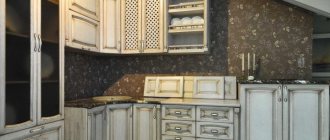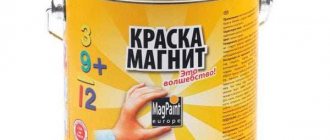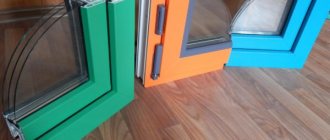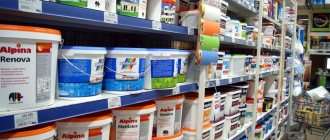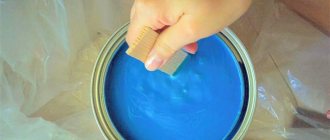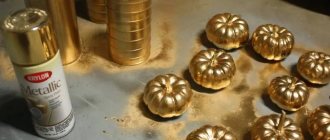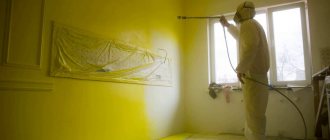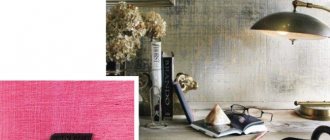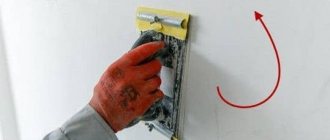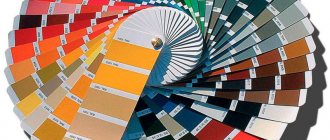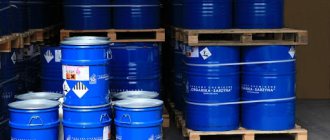What does it represent?
So, this type of paint is called a powder of very fine dispersion, which is obtained by melting film-forming components, various pigments, and special additives. Then all the ingredients are mixed, and then the melt is extruded, resulting in a thin plate. This plate is then crushed, ground and fractionated.
As for film-forming materials, these are often polyester or epoxy resins or any mixtures thereof. Acrylate and urethane materials are used somewhat less frequently. One particle of such powder has a size from 10 to 100 microns.
Powder painting – what is it?
It is believed that such paints are completely environmentally friendly, and the technology for painting with them is completely waste-free. The result is the highest quality decorative, as well as decorative and protective polymer coatings.
This coating is formed from polymer powder.
It is applied to the surface to be treated. There is a special method for this. The layer of powder is very thin. This layer is then melted at temperatures ranging from 160 degrees. And then the most uniform and continuous coating is formed.
Since the technology involves high temperatures, powder coating is used only for metal or glass products. Over the past 10 years, this innovative technology has been able to make its way into many areas where more traditional coatings based on paints and varnishes were previously applied.
Today, about 15% of all products are painted using powder paints. And this figure is increasing every day.
Types of surfaces
The chemical industry has mastered the production of powder paints for application to non-metallic surfaces, including MDF. If the base of the coloring composition is epoxy, deviations from the standard painting method are strictly unacceptable. Otherwise, color fastness and resistance to harmful atmospheric phenomena will be insufficient. But if all the requirements are met, the mechanical qualities of the coating will be at the proper level. Unfortunately, epoxy paints are hardly heat resistant.
If you need a finish that can be used outdoors and color fastness is a critical factor, you should use polyester paint. When significant amounts of acrylate compounds are introduced into the paint mixture, the surface will be resistant to contact with alkalis. Its appearance can be either matte or glossy. It is these powder paints that are widely in demand at machine-building plants.
The low-temperature variety of the coloring mixture turns out to be more and more in demand every year, but so far the technologies have not yet been developed enough for it to gain mass popularity. Polyurethane grades have a stable sheen and are mostly used to paint parts that are constantly subject to friction or heavy wear. Their appearance is similar to silk, and their chemical inertness is very high. Such compositions are not afraid of weather conditions, automobile fuel, or mineral oil.
Powder paints based on plasticized PVC are soft, like rubber. The coating layer is little affected by water, even with the addition of detergents, and when applied to wire baskets in dishwashers, it remains presentable for a long time. A carefully selected composition allows the paint to be used in contact with food and medications.
If electrical insulating properties are primarily needed, polyvinyl butyral is used as a base. Paints created using it can play both a protective and decorative role. The coating is resistant not only to electric current, but also to gasoline and abrasive effects. Mixtures of this kind are preferable for interior decoration of industrial facilities.
Antistatic properties can be selected quite flexibly. Technologists influence them by using various additives, providing for certain processing modes, and also synthesizing film formers with target parameters.
Epoxy polyester paint is thermosetting and mechanically resistant at the same time. But remember that ultraviolet rays can damage it. The chemical industry has also mastered the production of fluorescent coloring compounds. Therefore, the choice of products is huge, but you should carefully read the composition of the paint before purchasing.
Benefits of technology
Powder painting, what is it, why is this method so popular? It's simple. This technology is very economical. There are not a large number of operations here, the polymerization speed is very high. Powder painting equipment is compact in size. It should also be said that the paint is hard. The composition does not contain any solvents. The utilization rate is more than 95%. This is true thanks to a special recovery system for such compounds. Thus, the unused part of the powder is returned back to the technological processes and can be reused.
If we talk about traditional liquid paint and varnish products, then approximately 40 to 60% of the colorant remains in the solvent, but it does not remain on the coating. This means that the utilization rates of traditional paint are only 40-60%. This is if you do not take into account the various losses that sometimes occur during coloring.
High savings, low cost
Low cost is another advantage. The price depends on the surface area, as well as the complexity of the item. The price is also determined by the type of paint. What are the savings?
Powder painting – what is it? This is a dyeing without solvents, which in liquid analogues act only as a carrier for the film-forming substance. Thanks to the energy savings for heating and ventilation, and the fact that there is no need to expend money or energy on the process of evaporating solvents, the cost of the technology is very, very affordable.
There is also no need for large premises - the equipment can be located in a small workshop.
No. 2. What paints are used?
In powder coating, various compositions are used, which differ in their basic properties, due to which the versatility of the method is achieved. All paints used can be divided into thermoplastic and thermosetting, the main difference is in the characteristics of hardening.
Thermoplastic paints
Particles of such paints form a monolithic coating on the surface without undergoing chemical reactions. It is based on the fusion of particles and cooling of the melt. Typically, the resulting coating can be removed in the future with a solvent. This type of paint includes:
-compositions based on polyvinyl butyral are resistant to abrasive substances and gasoline, and are resistant to salt and aqueous environments, albeit at room temperatures. In addition, such paints boast electrical insulating properties and good decorative properties; they are used mainly for interior work;
-polyamide powder compositions make it possible to form an aesthetic, durable and hard coating that is highly resistant to abrasion and solvents. Used for interior and exterior work;
-polyvinyl chloride paints are highly resistant to weathering and detergents, are excellent for outdoor use, but are also used in interior work;
-compositions based on polyelefins protect the surface well from corrosion and mechanical stress, but are characterized by low weather resistance. Moreover, the paint layer tends to crack over time. This group includes paints based on polypropylene and polyethylene.
Thermosetting paints
The basis of such compositions is a thermosetting film former. The coating on the surface is formed not only due to the fusion of particles, but also due to the passage of chemical reactions between them. The result is a durable paint layer that is not affected by solvents.
This group includes the following types of paints:
-polyurethane paints allow you to create a beautiful coating with a characteristic shine or even relief. The composition is resistant to atmospheric influences, liquid fuel, oils and water, and tolerates abrasive loads and friction;
-acrylate paints allow you to create a coating that is resistant to sunlight and mechanical damage, which does not lose its original appearance for a long time. The paint is resistant to high temperatures and alkalis;
- epoxy compounds have high strength, adhesion, are resistant to solvents, but are sensitive to sunlight, under the influence of which the top layer can be significantly destroyed, down to a chalky state;
-polyester compounds are often used for painting objects that will be located outdoors. The paint allows you to form a durable layer that is resistant to sunlight and other atmospheric influences;
-epoxy-polyester paints can easily withstand elevated temperatures, do not turn yellow or deteriorate, and are resistant to solvents.
Thermosetting paints are widely used in mechanical engineering.
Variety of colors and shades
Powder painting - what is it? This is an opportunity to use more than 5,000 different colors, their shades, as well as a wide variety of textures. Any surface can acquire properties that are simply impossible or very expensive with traditional painting technologies.
For example, powder painting of metal in silver or aluminum metallic, fluorescent type paints, with an “anti-zine” effect, imitating moiré or granite - all this is available. In addition, you can make the surface more glossy or, conversely, more matte.
Durability and surface strength
Powder coating differs from traditional paint and varnish coatings in its increased chemical resistance, as well as excellent physical and mechanical characteristics. Thus, in order to damage the layer, an impact requires a force of more than 500 Nm, and the bending strength is 1 mm.
The resulting coating is quite impact resistant.
This has already been appreciated by cyclists, motorcyclists, and car owners. Powder coating of a bicycle is a popular service for those who prefer to ride in extreme disciplines and at the same time want to keep the frame in a new condition at all times.
Powder coating of metal
offers powder painting services for metal products at a price of 140 RUR/m2. The period for completing the work is 3 days.
The company has its own production base; the workshop has ovens up to 16 meters in size, which allows painting complex, oversized and heavy products weighing up to 2 tons. We offer preferential conditions to regular customers for regular, large quantities. Deferred payment is provided for up to 7 days. The cost of painting rolled metal with polyester from 1 ton = 100,000 rubles.
Advantages of powder technology
This is an opportunity to get a fairly thick single-layer coating. In the case of paints and varnishes, several layers would have to be applied.
Powder painting of metal products, glass and others is fully automated. The film practically does not shrink after painting. There are no negative effects due to the absence of any solvents.
Any drips and wrinkling can be completely eliminated.
Powder paint has good temperature resistance.
Varieties
Powder paints based on thermosetting film-forming agents are widely used. They are divided into 2 types: polyester and epoxy-polyester.
Polyester compounds
They are based on a special fine powder that uses polyester, pigments and additives, but does not contain any solvents or epoxy resin.
Polyester paints are characterized by low toxicity, so they are even used for painting bicycles and car parts. They are designed for various metal surfaces that regularly experience various atmospheric influences (high/low temperatures, snow, rain, hail, wind). Resistance to temperature changes is very high. Application methods - electrostatic or tribostatic methods.
Other positive characteristics include:
- excellent pouring and covering properties;
- resistance to aggressive chemicals;
- drying speed.
Advice! Store paintwork materials for no more than 12 months at a temperature of 25°C.
Epoxy-polyester
These paints are based on polyester (up to 50–70% of the total composition) and epoxy resins, supplemented with a hardener, fillers and pigments (up to 35–50% of the total composition). They belong to powder enamels for internal use and have high strength characteristics:
- impact resistance;
- elasticity;
- solvent resistance;
- good spreadability.
Epoxy-polyester (hybrid) paints are used to paint and improve the appearance of metal products used indoors. It could be:
- electrical equipment;
- Appliances;
- dishes;
- Furniture for home and office;
- car accessories;
- heating devices;
- travel accessories.
Dyeing methods: electrostatic or tribostatic. Epoxy-polyester compounds provide excellent protection against corrosion and do not turn yellow when exposed to high temperatures.
Advice! When working with such enamels, be careful - wear a protective mask, special glasses and gloves
Electrostatic spray painting
This method involves charging with a corona charge. This is industrial technology. It is quite popular due to its high efficiency. Many powder paints can be charged. The method is quite productive - it is used to work on large surfaces.
Along with the advantages, this electrostatic spraying also has some disadvantages.
A strong electric field is created between the atomizer and the part. This can make painting a little more difficult in corners and deep recesses. In addition, incorrect settings can sometimes degrade the quality of the surface.
Classification of materials
It is customary to classify coloring materials according to the type of polymers included in the composition. Based on the appearance of the main components, the paint can be suitable for outdoor or indoor use. The most popular grouping is by the method of film formation on the surface and by the method of layer hardening.
It is customary to distinguish two large classes of paints based on the type of film-forming substance. Thermoplastic and thermosetting paints are the main types of powder paints based on their film-forming abilities. They also have an extensive classification.
Thermoplastic
Thermoplastic powder paints contain coloring components based on substances that form a coating in the form of a film due to the melting of paint elements and their cooling. The formation of a layer is not accompanied by chemical reactions. However, the film may dissolve if the temperature is not maintained. The choice of paint is made depending on the conditions:
- For decorative purposes, thermoplastic paint is used, the base of which is vinylite. This dye is suitable only for painting indoors, while its fairly thin thickness provides good protection against moisture at room temperature.
- For exterior work and covering indoor surfaces, paint based on polyvinyl chloride is suitable. It is characterized by high weather resistance and resistance to chemicals.
- The high physical and mechanical properties of the polyethylene-based layer have led to the fact that this polymer paint is actively used for painting pipelines for various purposes.
- The polyamides that make up polyamide paint have high levels of aesthetic appeal and are used for decorative purposes for painting both indoors and outdoors.
Thermoset
Thermosetting powder paints are a thermosetting film former. Here the constituent particles fuse and a chemical reaction occurs. Their advantage is that the coating does not melt or dissolve, and is characterized by high hardness and resistance to various defects. Therefore, paint is actively used in mechanical engineering. It may contain various epoxy and polyester resins.
Powder paint of this type requires strict adherence to the painting technique. Only in this case can a positive result be achieved that meets all the parameters of color fastness and weather resistance. Paint Features:
- Epoxy substances give it high mechanical strength and durability. However, significant defects can form on the surface under the influence of solar ultraviolet radiation.
- Compared with epoxy paint, polyester paint does not deteriorate outdoors, used for outdoor painting. It has high color stability.
- The acrylate base provides high resistance to a variety of alkaline compounds. The saturation of the color pigment is maintained for a long time.
Tribostatic spraying method
What is this type of powder coating? What is tribostatic spraying?
This is friction charging. Unlike electrostatics, there is no high voltage generator, which is necessary for the atomizer.
Teflon is used for this method. This material allows you to perfectly charge many powder paints. Nebulizers for this technology do not require strong electric fields. Charged particles are able to penetrate even the most inaccessible places. You can apply paint in several layers.
